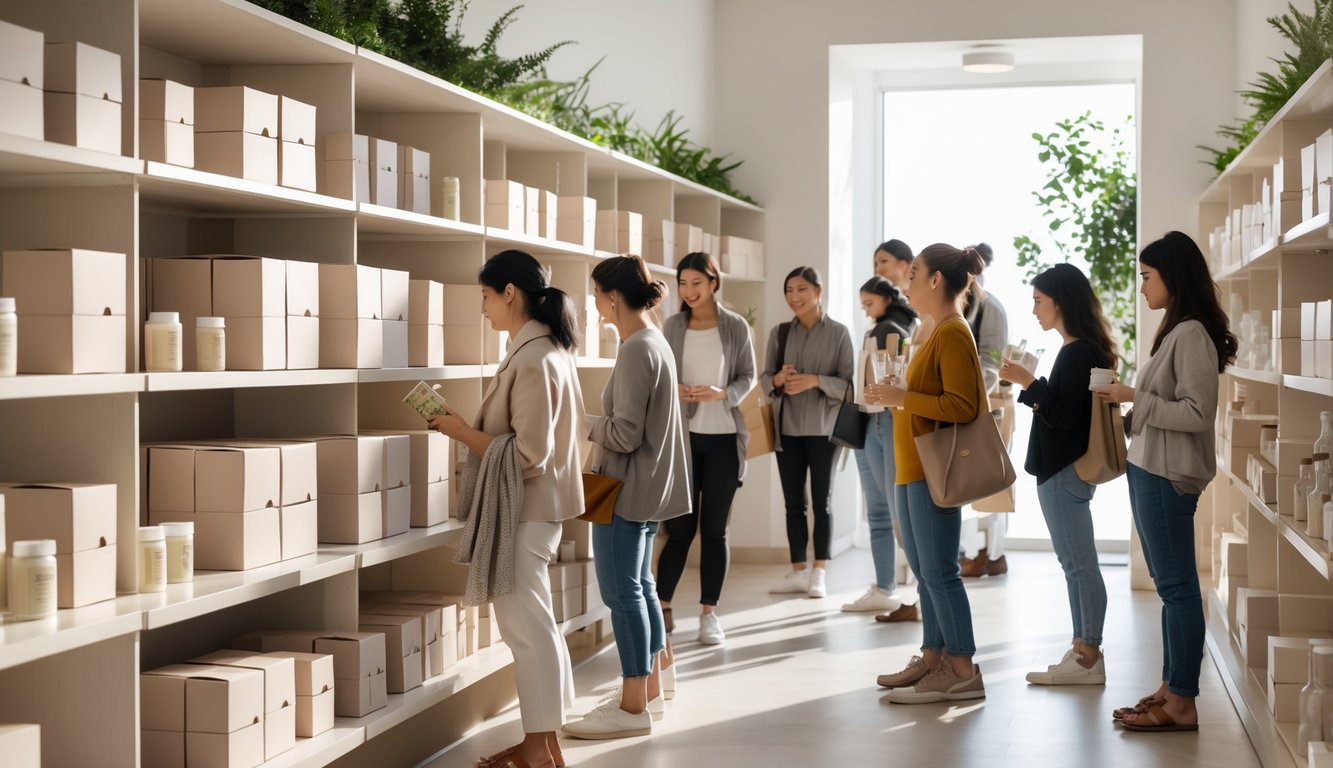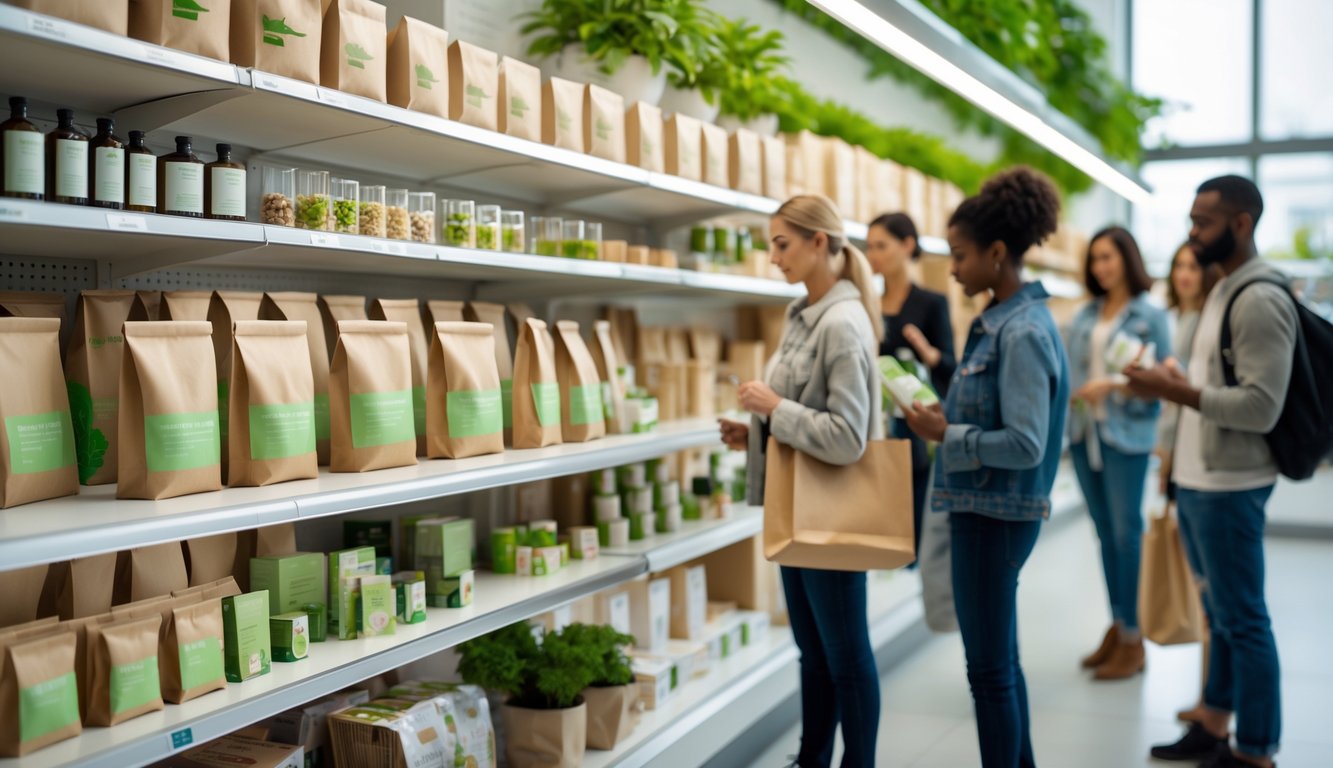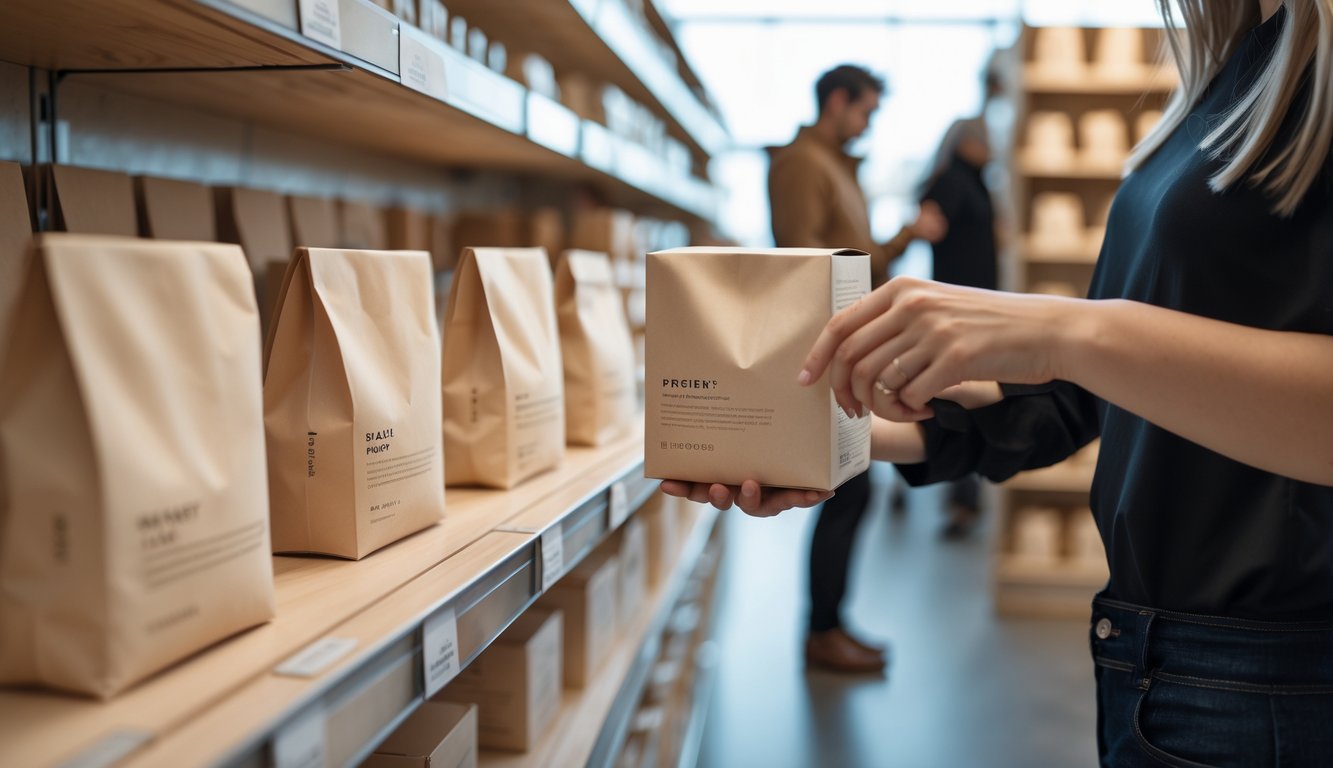
Sustainability and Eco-Conscious Choices

Everyone acts like they want an Instagrammable box, but honestly, people just check for the recycling symbol. Forget hashtags and fake eco claims, people want proof. And nothing annoys me more than wasteful packaging when I know better tech exists.
Adoption of Sustainable Packaging
Watched brands blow money on metallic boxes and foam inserts—now they’re racing to go “sustainable” because, well, Gen Z calls them out if they don’t. NielsenIQ says eco-packaging cuts carbon and looks good for the brand. I thought these changes would take forever, but government rules and nonstop customer feedback forced brands to move fast.
It’s not always pretty. I’ve seen luxury stuff in plain cardboard, not velvet. But McKinsey says most people will pay more for packaging that matches their values, not for glitter. For years, I thought “eco” was just a fad. Now, big brands are setting real deadlines, and tiny startups are eating their lunch by being transparent about materials. Suddenly, “eco” means you’re legit. Or at least, not a total dinosaur.
Recyclable Materials and Waste Reduction
Okay, if someone handed me a product in one of those shiny, foil-coated boxes now, I’d probably just stare at them. It’s 2025, come on—how are we still doing this? Brands keep switching to glass and aluminum, which, sure, looks good on a spreadsheet, but mostly it’s because people (well, Americans at least) have decided glass is the only thing that counts as “sustainable.” I saw that McKinsey research—glass is the gold medal, plastic’s the kid picked last in gym class. But then you get these brands still pushing out multilayered blister packs and calling them “compostable,” as if that makes them recyclable. It doesn’t. Not even close.
I can’t escape the waste reduction talk. If I hear “landfill” one more time, I might scream. Talked to a founder last month—thought it’d be some techy answer about cutting shipping costs, but nope, it was just lighter packaging. Less junk, less cost. Makes sense. Recycling rates jump when you don’t need a PhD to figure out what bin to use, and now every package seems to have a QR code for local recycling rules. That’s just baseline now. If you’re not doing it, you’re behind.
Influence of Environmental Concerns
I’m always butting heads with marketing folks who think caring about the planet is a phase—like, sure, everyone’s just here for the product, right? No. Even Forbes’ business council is out here saying buyers are judging brands on whether they actually give a damn. I’ve literally watched people grill a brand about their packaging and not even ask about what’s inside the box. Does that make sense? Maybe not, but it’s happening.
Loyalty? Feels like it’s all about eco-choices now. It’s like, you open the box, and before you even touch the product, you’ve already made a call about the brand. There was this Mondi survey—efficiency, sustainability, values, boom, that’s what matters. Not the shiny stuff. I know friends who’ll drop a brand for a single bad move on the eco front. No second chances.
Carbon Footprint and Packaging
What really gets under my skin is how companies talk about cutting their carbon footprint like it’s flipping a switch. Yeah, sure. In reality? It’s a nightmare. Life cycle analysis, scope 3 emissions, vendors who don’t even know what a carbon calculator is. But there’s no out. Customers want it, regulations are getting tighter, and the finance people want lighter shipments. One sustainability manager told me they track packaging CO2 like payroll—every month, no excuses.
So, yeah, lighter, recycled, plant-based stuff gets all the attention. It’s cheaper to ship, helps with emissions reports, ticks the right boxes. But it’s not magic. I’ve watched projects fall apart because the “sustainable” materials just didn’t show up. Still, if you set real carbon reduction targets, you get better deals, and the shoppers who care about “net zero” start actually noticing you. Not a buzzword anymore—it’s a checklist item.
Value Over Flash: What Modern Consumers Want

Every time I grab something with over-the-top packaging, I just wonder who it’s for. No one I know is impressed by it. People (and the stats back this up) care way more about what’s inside and what the brand stands for. The whole “shelf game” got flipped on its head.
Shifting Notions of Value
It’s not about cheap anymore. My neighbor pays extra for these eco-friendly laundry pods and skips the mega-pack of the regular stuff. She just shrugs and says, “At least I’m not poisoning the river.” Hard to argue with that. Value now is about authenticity, eco-cred, and sticking to your own ethics.
GlobalProductsExpo says people expect brands to actually walk the walk. Glossy wrappers? Clever slogans? Doesn’t matter if the company’s dodging the real questions. Nobody’s falling for greenwashing anymore, especially not with a phone in their hand.
Packaging that ties into a brand’s story—limited editions, simple but solid materials—that’s what gets attention. Sometimes, plainer packaging just looks more premium than the neon, plastic stuff. Go figure.
Willingness To Pay for Essentials
It’s wild—people will spend on things that matter, but skip the extras. My friend drops $7 on allergy-safe bread but won’t pay $2 for store-brand cookies. Priorities. DesireeDesign says essentials and stuff that lasts win every time.
Basics in the wardrobe? It’s all about durable jeans, not flashy one-off jackets. If a brand’s just offering trends, they’re losing ground. I think ESPN had a piece about running shoes—same vibe, people pay up if it works and lasts. The impulse to splurge is still there, but for the basics, people want proof. Literal receipts, or at least something that says “this will last.”
Aging and Spending Habits
My aunt, who’s pushing seventy, scrolls through wellness supplements and ignores anything that looks like a gimmick. Her whole crowd is rethinking “old age”—they’re all about prevention, not just cures. Berlin Packaging talks about consumers redefining aging, and it’s true. Walking clubs, probiotic shakes, sleep trackers—none of that’s fringe anymore.
Coupons? Who cares. It’s about what fits their plan for staying active. Some expert at an expo said, “Science-backed personalization is the most valuable asset any product can offer.” Maybe. But I see older buyers read thirty reviews before they buy a vitamin. If it’s not tailored or doctor-recommended, they’re out. That’s value now—super practical, borderline paranoid, but it’s changing everything.



